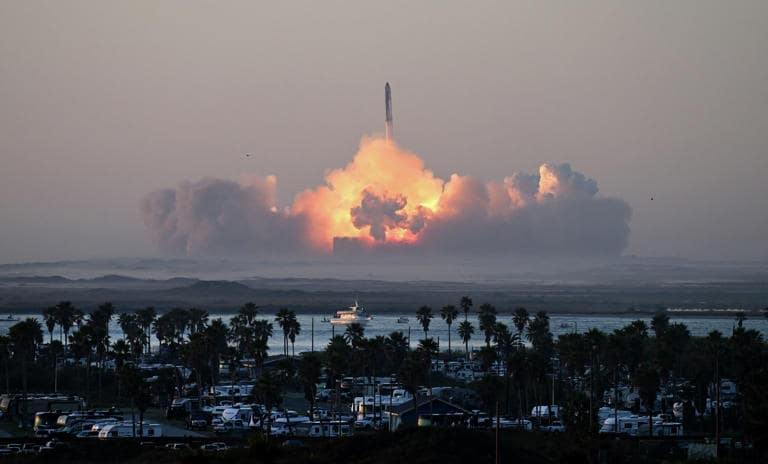As SpaceX was preparing for the fourth Starship flight at its facilities in Boca Chica, Texas, a Starship Raptor engine appears to have burned out at SpaceX’s rocket engine test site in McGregor, Texas.
Local media reported that during the test a powerful explosion occurred and flames erupted in the tower. So far, there has been no report of any accident from SpaceX. TV channel NASASpaceflight broadcast the incident live.
SpaceX uses the Raptor engine for its Starship system’s Super Heavy booster and upper stage spacecraft. They use liquid methane and liquid oxygen as fuel, and were designed to be powerful enough to be able to send starships to the Moon and Mars. As Gizmodo suggests, a leak or similar anomaly in the mixture of its gases could have caused the explosion, although SpaceX has yet to officially address what happened during the test.
But it seems that SpaceX is not concerned with this episode. On Friday, the company announced that a fourth test of Starship could take place on June 5, pending regulatory approval.
“The fourth test flight shifts our focus from achieving orbit to demonstrating the ability to return Starship and Super Heavy, the launch system’s boosters, and reuse them,” SpaceX’s announcement said. “The primary objective will be to execute a landing burn and soft splashdown in the Gulf of Mexico with the Super Heavy booster and achieve controlled entry of the starship.”
Starship’s last test in March was SpaceX’s most successful attempt to date, and its first re-entry from space after failing to reach orbit in the past.
Testing the world’s most powerful rocket
SpaceX’s fully reusable Starship Super Heavy is the world’s most powerful rocket thanks to 33 Raptor engines attached to the first stage.
The Raptor engines currently undergoing testing are SpaceX’s Raptor 2 engines. These include more emphasis and some design changes compared to the previous iteration.
In 2022, Elon Musk said the Raptor 2 engine will have 230 tons or ~500k pounds of thrust at sea level. He also said that the cost of manufacturing the latest version is about half that of the previous model V1.5, and that it is “much more reliable” and powerful.
On its final flight test, IFT-3, Starship finally reached orbital velocity and flew around Earth before crashing in the Indian Ocean. On the next flight, SpaceX aims to perform a reentry burn, allowing Starship to make a soft landing in the ocean.
SpaceX may fly Starship nine times this year. The private space firm is looking to amend its existing agreement with the Federal Aviation Authority (FAA), allowing it to fly more frequently. This will allow it to accelerate its Starship development and fulfill its contract with NASA for a modified Starship lunar lander that will return humans to the Moon.




